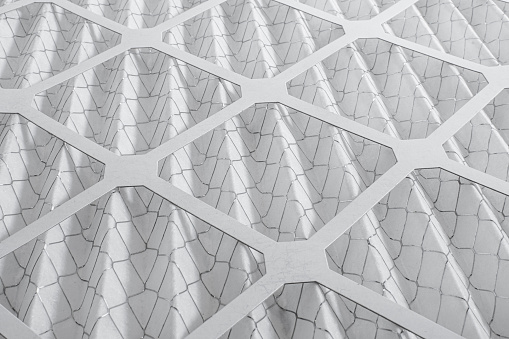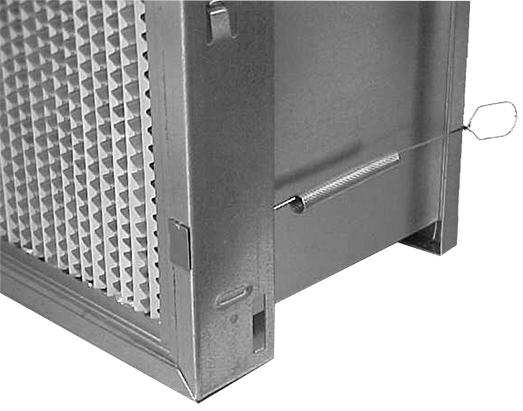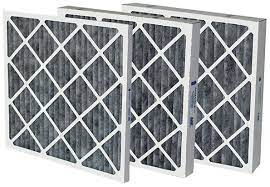Commercial & Industrial

Indoor air quality (IAQ) refers to the quality of the air inside buildings and structures as it relates to the health and comfort of occupants. Good IAQ is essential for maintaining a healthy and productive indoor environment, as poor IAQ can have a negative impact on human health, comfort, and well-being.
Indoor air pollutants can come from a variety of sources, including building materials, furnishings, cleaning chemicals, and human activities. Common indoor air pollutants include particulate matter, carbon monoxide, volatile organic compounds (VOCs), and other chemicals.
Exposure to these pollutants can cause a range of health effects, including respiratory problems, headaches, fatigue, and allergies. Long-term exposure to certain pollutants can also increase the risk of more serious health problems such as cancer and heart disease.
Commercial and industrial air filters are essential components of HVAC (heating, ventilation, and air conditioning) systems. They play a critical role in maintaining good indoor air quality by removing airborne contaminants such as dust, pollen, mold spores, and bacteria from the air.
Commercial and industrial indoor environments face several challenges when it comes to maintaining good indoor air quality (IAQ). These challenges can include:
Poor Ventilation: Poor ventilation is a common problem in commercial and industrial buildings, particularly older buildings. Inadequate ventilation can lead to a buildup of indoor air pollutants such as carbon monoxide, volatile organic compounds (VOCs), and other contaminants.
Contaminants from Building Materials and Furnishings: Many building materials and furnishings can release pollutants into the air, such as formaldehyde, volatile organic compounds (VOCs), and other chemicals. These pollutants can have both short-term and long-term health effects on building occupants.
Contaminants from HVAC Systems: HVAC systems can be a source of indoor air pollutants if they are not properly maintained. Contaminants can accumulate in HVAC systems over time, including bacteria, mold, and other microorganisms.
Occupant Activities: Occupant activities can also contribute to indoor air pollution in commercial and industrial buildings. For example, smoking, cooking, and using cleaning chemicals can all release pollutants into the air.
Outdoor Air Pollution: Outdoor air pollution can also affect indoor air quality in commercial and industrial buildings. Pollutants such as particulate matter, ozone, and nitrogen dioxide can enter buildings through ventilation systems or open windows and doors.
Lack of Maintenance: Regular maintenance of HVAC systems, air filters, and building components is crucial for maintaining good indoor air quality. A lack of maintenance can lead to a buildup of contaminants and reduced HVAC system efficiency.
Addressing these challenges requires a comprehensive approach that includes proper ventilation, the use of high-quality air filters, regular maintenance of HVAC systems, and the use of low-emitting building materials and furnishings. Building occupants can also play a role by adopting behaviors that reduce indoor air pollution, such as not smoking indoors, using non-toxic cleaning products, and properly storing chemicals and other pollutants. By addressing these challenges, commercial and industrial buildings can maintain good indoor air quality and provide a healthy environment for building occupants.
Types of Commercial and Industrial Air Filters
There are several types of commercial and industrial air filters available, each designed to target specific airborne pollutants. These include:
Fiberglass Filters: Fiberglass filters are the most commonly used type of air filter. They are made from spun glass fibers and are designed to trap large airborne particles such as dust and lint. While they are effective at removing larger particles, they are less effective at removing smaller particles such as pollen and mold spores.
Pleated Filters: Pleated filters are made from a dense layer of synthetic material that is pleated to increase the surface area for trapping particles. They are more effective than fiberglass filters at removing smaller particles, but they also have a higher resistance to airflow, which can reduce HVAC system efficiency.
HEPA Filters: HEPA (High-Efficiency Particulate Air) filters are designed to remove the smallest airborne particles, including bacteria and viruses. They are made from a dense layer of glass fibers and are highly effective at removing particles as small as 0.3 microns in size. HEPA filters are commonly used in hospitals and other healthcare settings, as well as in clean rooms and other critical environments.
Activated Carbon Filters: Activated carbon filters are designed to remove odors, gases, and volatile organic compounds (VOCs) from the air. They are made from activated carbon, which is a highly porous material that absorbs gases and odors. Activated carbon filters are commonly used in commercial and industrial settings where odors and VOCs are a concern, such as in restaurants and printing facilities.
Choosing the Right Air Filter
Choosing the right air filter for a commercial or industrial application depends on several factors, including the size and type of HVAC system, the specific contaminants present in the air, and the level of filtration required. It is important to consult with a qualified HVAC professional to determine the appropriate filter for the application.
Ask Our Expert!
Get in touch with our air filtration expert for your business's clean air needs.
Product Range

Air Filters
AAF International is offering a complete range of segment-specific air filters for commercial and industrial premises to solve their clean air needs.

Air Filter Frame & Latches
Air Filter Frame & Latches are designed for retaining air filter media pads in applications that require additional media support

Gas-Phase Filtration Products
Gas-Phase Filtration Products are devices that use the adsorption and/or chemisorption removal process.

